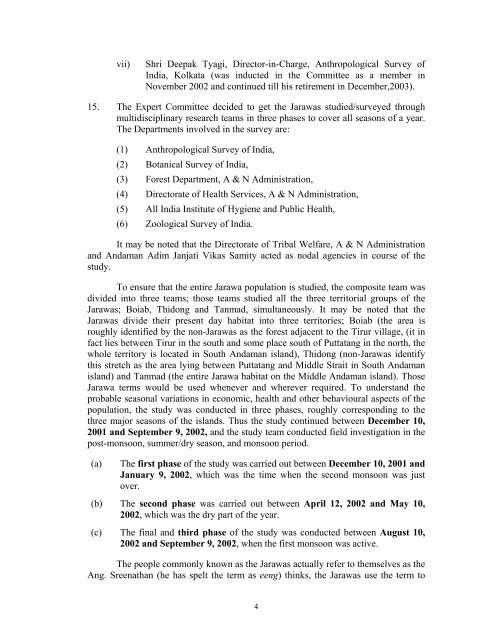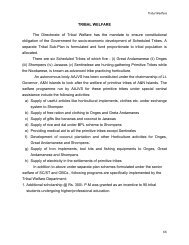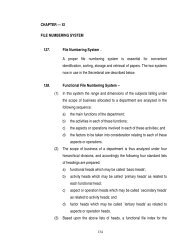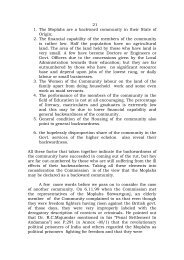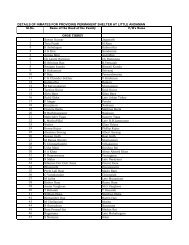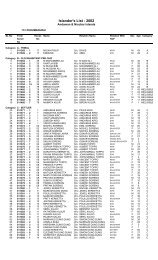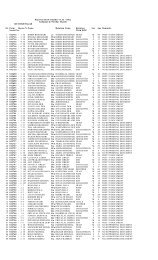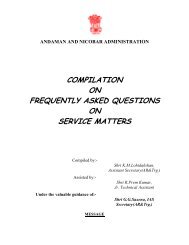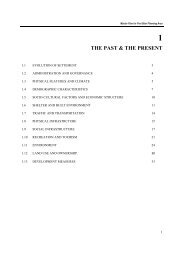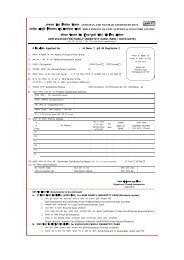1 Introduction - Andaman and Nicobar Islands
1 Introduction - Andaman and Nicobar Islands
1 Introduction - Andaman and Nicobar Islands
You also want an ePaper? Increase the reach of your titles
YUMPU automatically turns print PDFs into web optimized ePapers that Google loves.
vii) Shri Deepak Tyagi, Director-in-Charge, Anthropological Survey of<br />
India, Kolkata (was inducted in the Committee as a member in<br />
November 2002 <strong>and</strong> continued till his retirement in December,2003).<br />
15. The Expert Committee decided to get the Jarawas studied/surveyed through<br />
multidisciplinary research teams in three phases to cover all seasons of a year.<br />
The Departments involved in the survey are:<br />
(1) Anthropological Survey of India,<br />
(2) Botanical Survey of India,<br />
(3) Forest Department, A & N Administration,<br />
(4) Directorate of Health Services, A & N Administration,<br />
(5) All India Institute of Hygiene <strong>and</strong> Public Health,<br />
(6) Zoological Survey of India.<br />
It may be noted that the Directorate of Tribal Welfare, A & N Administration<br />
<strong>and</strong> <strong>Andaman</strong> Adim Janjati Vikas Samity acted as nodal agencies in course of the<br />
study.<br />
To ensure that the entire Jarawa population is studied, the composite team was<br />
divided into three teams; those teams studied all the three territorial groups of the<br />
Jarawas; Boiab, Thidong <strong>and</strong> Tanmad, simultaneously. It may be noted that the<br />
Jarawas divide their present day habitat into three territories; Boiab (the area is<br />
roughly identified by the non-Jarawas as the forest adjacent to the Tirur village, (it in<br />
fact lies between Tirur in the south <strong>and</strong> some place south of Puttatang in the north, the<br />
whole territory is located in South <strong>Andaman</strong> isl<strong>and</strong>), Thidong (non-Jarawas identify<br />
this stretch as the area lying between Puttatang <strong>and</strong> Middle Strait in South <strong>Andaman</strong><br />
isl<strong>and</strong>) <strong>and</strong> Tanmad (the entire Jarawa habitat on the Middle <strong>Andaman</strong> isl<strong>and</strong>). Those<br />
Jarawa terms would be used whenever <strong>and</strong> wherever required. To underst<strong>and</strong> the<br />
probable seasonal variations in economic, health <strong>and</strong> other behavioural aspects of the<br />
population, the study was conducted in three phases, roughly corresponding to the<br />
three major seasons of the isl<strong>and</strong>s. Thus the study continued between December 10,<br />
2001 <strong>and</strong> September 9, 2002, <strong>and</strong> the study team conducted field investigation in the<br />
post-monsoon, summer/dry season, <strong>and</strong> monsoon period.<br />
(a) The first phase of the study was carried out between December 10, 2001 <strong>and</strong><br />
January 9, 2002, which was the time when the second monsoon was just<br />
over.<br />
(b) The second phase was carried out between April 12, 2002 <strong>and</strong> May 10,<br />
2002, which was the dry part of the year.<br />
(c) The final <strong>and</strong> third phase of the study was conducted between August 10,<br />
2002 <strong>and</strong> September 9, 2002, when the first monsoon was active.<br />
The people commonly known as the Jarawas actually refer to themselves as the<br />
Ang. Sreenathan (he has spelt the term as eeng) thinks, the Jarawas use the term to<br />
4


